
No Rest for the Wicked feels like a bit of a missing link. In the same way that Salt and Sanctuary bridged a gap between Metroidvanias and the Souls series, No Rest exists as a stop on an imaginary evolutionary journey from Diablo-style action RPGs and the aforementioned Souls both Demonic and Dark. Taking the isometric view and randomised loot from the former, and the exploration and more measured approach to combat from the latter, No Rest attempts to craft something new from familiar ingredients.
At first, I thought it was a horrible mistake. After a brief tutorial, you're shipwrecked on the island of Sacra and left to find your way to the nearest settlement. Almost immediately, the clash between the two disparate game styles becomes apparent, and the focal point of this dissonance is loot.
Dark Souls and Diablo have two completely opposing philosophies when it comes to loot. In the Souls games, almost every piece of gear is deliberately placed, and even randomly dropped loot comes from specific enemies. Your pool of healing items is small, but it refreshes on every death and checkpoint. There's little guidance for building your character, but you can pick a starting loadout that is geared towards your preferred playstyle. You'll probably be able to complete the game with that starting gear too, since it upgrades, and the combat is designed more around preference than any given sword being obviously better than another.

I don't know if there's a universal winning formula for a great action game out there, but Stellar Blade sure has tried its hardest to reverse-engineer one. Like Bayonetta? Here, take an English lady zipping about in heels, annihilating monsters to a delectable soundtrack. Dark Souls fan? Rest at this camp to refill your potions, and better brush up on those parrying and dodging skills! You like God of War? How about a dozen different finishers that would make Kratos blush. Melee combat not for you? Have a gun.
Turns out, cherry-picking from the last 15 years of video game action and pumping it into a single campaign of relentless hacking and slashing is fun. Really fun. The type of fun that turns "just one more hour" into "when did it turn 2am?". Part of the appeal with Stellar Blade is just the sheer breadth of options: parrying, dodging, counter-attacking, dashing, ambushing, throwables, multiple ammo types for your gun, nine special abilities, and a dozen combos combining light, heavy, and air attacks. Add over 60 enemy types - the monstrous Naytiba - to slay, most with their own unique attack patterns, and Stellar Blade is far deeper than its flashy visuals imply.
To ease you in, only a few of these attacks are initially available to our protagonist, Eve, mirroring her rookie status as one of the cybernetically enhanced members of the 7th Airborne Squad, a super soldier group that operates from Earth's orbit. Eve is fresh off a failed mission to eliminate the Earth's supersized Alpha Naytibas, the monsters responsible for the planet's apocalyptic demise, and as you journey through city ruins and dusty wastelands in search of these Alphas, you steadily unlock her powerful new skills. Exactly how you want to devastate each poor Naytiba you cross is up to you from here. Investing in the Ambush perk could turn Eve into an assassin, for instance, or maybe you'd like to get better at timing your parry? Perhaps guns are more your speed, so sure, unlock those targeting missiles and watch enemies blow up like a fireworks show.

Yesterday, in between bouts of Manor Lords, I popped down the road to do some food shopping, and bought bread, milk, vegetables, and some other things, then walked home. It took me about 30 minutes all in all, and the whole time I never questioned whether there'd actually be food in the shop when I got there. I didn't think about whether they'd had a good enough harvest to keep their stores full during the winter. I just popped in and popped out, squeezing a fundamental part of my daily subsistence into a lunch break. How much we now take for granted.
Manor Lords has made me think about this because it's a game that pulls just getting by sharply into focus. It's a settlement-building game about the daily toil of living off the land and slowly, gradually, bending it to your will. It's a game about establishing something from nothing, and living in small villages alongside, and very much in view of, the other families who reside there. It's a game about crop rotation and people coming together for harvest time, to feed each other, or to help clothe each other - and eventually, to arm and protect each other. Manor Lords is a window into what life was like in the mediaeval era.
It's also, famously, a game made by only one person over seven years, not that it feels like a solo effort in any way to play. Usually, there's an air of jankiness to solo projects like this, but that's not the case here. Manor Lords, in so many ways, is a remarkable achievement. Visually, it's a pastoral idyll of mist collecting on rolling hills in the morning as birds pass by, or sun throwing long shadows across the meadows by evening. It's the forests turning your horizon from green into shades of orange as the autumn comes, and then white as the snow carpets it all. Then in your village, there's the intricate beauty of seeing your people at work, tending the fields or working the market stalls. Some walk with oxen as they pull logs needed for construction, while the workers bark things like, "Need to house this timber to the gable!" In your ear, choral music and sweeping pastoral scores play out, reminding me more than once of composer Ralph Vaughan Williams' work, which is a very good thing. In the way it plays, there's beauty too. Simply placing a road and watching it dynamically curve around obstacles is a pleasure, as is watching a building you've placed being constructed. There's a confidence here I did not expect.

Of all the Metroidvania elements in Tales of Kenzera: Zau, my favourite are the trees. Simply enough, meditating inside a tree provides a health boost. It's here the camera pans out to reveal these great, almost magical, natural structures which provide safety, sanctuary and a moment of reflection. Protagonist Zau is a hot-headed and petulant young man desperate to revive his father, but sat quietly in the trunk of a tree, he's just a boy.
The trees are a key example of how Tales of Kenzera transposes the genre to its African setting, but also where its heart lies: with the relationship between a father and son. The game's creator, voice actor Abubakar Salim (best known for his portrayal of Bayek in Assassin's Creed: Origins), has been particularly open about the personal inspiration behind the game: his own experience of grief following the death of his father. There's even a moving short film released ahead of the game. Yet even without knowing this, Tales of Kenzera itself exudes passion and love.
It's a story-within-a-story set in the fictional Afro-futurist land of Kenzera, and it tells the tale of desperate shaman Zau who bargains with Kalunga, god of death, following the passing of his father. Zau must deliver three spirits to win back his father and, along the way of his adventure, he learns to cope with his feelings of grief. Kalunga becomes his father-figure guide who speaks in proverbs and commands Zau with stern yet comforting lessons; Zau in return listens, rebels, argues, and accepts.

Eiyuden Chronicle: Hundred Heroes is exactly what its lofty crowdfunding campaign promised it would be: a Suikoden successor in all but its name, built by a team of veterans who first made that classic in 1995. And so Hundred Heroes is another impossibly massive, turn-based, party-centric RPG. It tells another wartorn story about resisting an empire, cut through with goofball moments where an eyepatched Aussie kangaroo might yell made-up words.
And - because doing anything else would be blasphemy - there's another 100-plus party members to find, cosy up to, and experiment with in your six-character party. Reclusive hunters, kings, talking sharks (shi'arcs here), a literal travel bag with glowing Jawa eyes, your cute auntie who does nothing but bake cherry pies - they're all here, and the cast's staggering size is still what sets the Eiyu-Suiko-den group of games apart.
Trying to catch 'em all recalls the pleasures of a collectathon as you rapidly scan the screen for signs of unusually detailed NPCs to recruit. (No interview process required - everyone's allowed in, accused criminals included.) They can pretty much be found anywhere. You'll get dozens by just following the main quest. Dozens more are in towns on standby mode until you walk into their presence. Some will only appear in the open world when you've progressed to a certain point or met prerequisites.
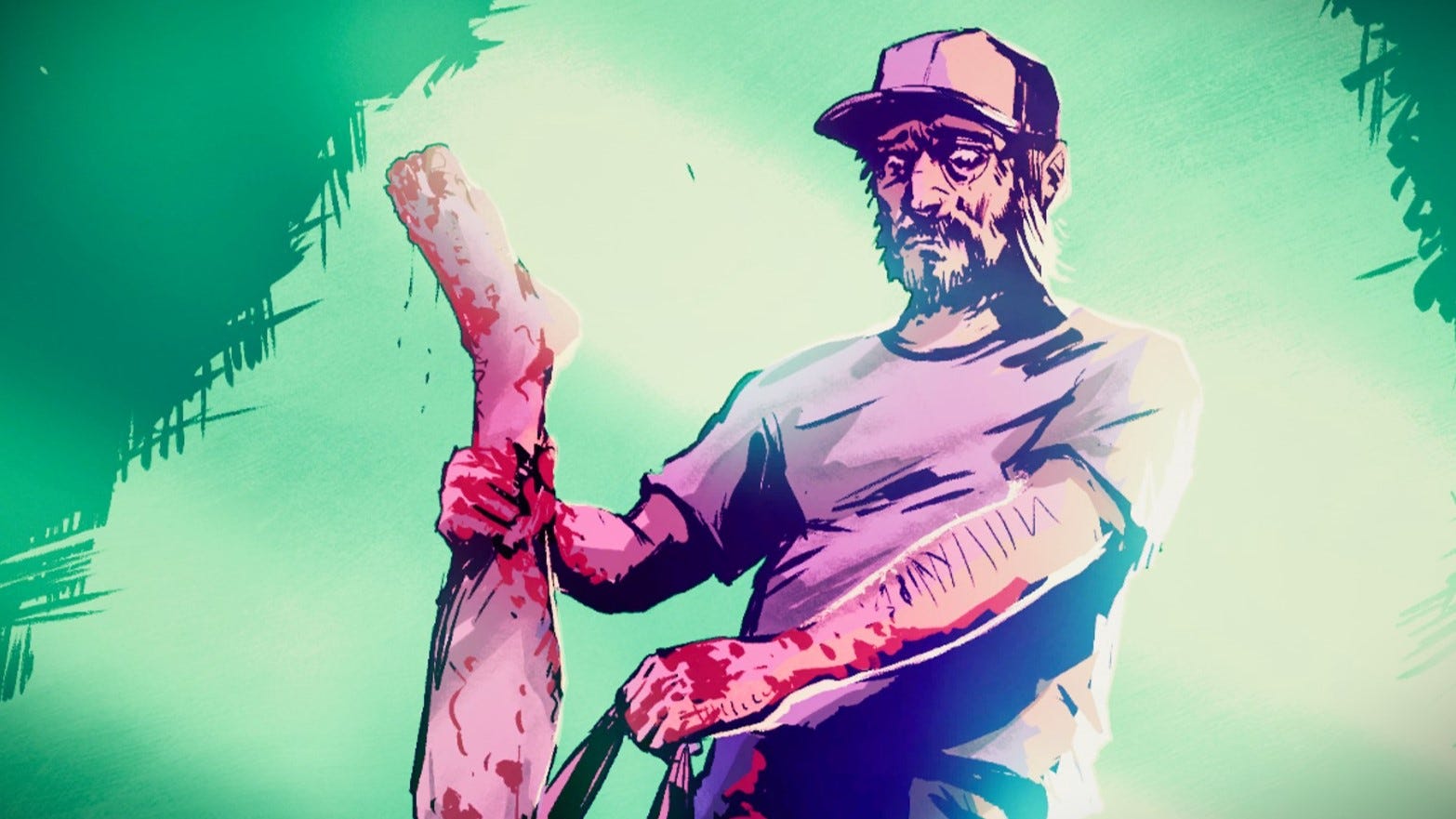
Mechanically, Life Eater uses a diary-based puzzle system in some really interesting ways, but it struggles to say anything meaningful about the shock-factor setting it's gone for.
Few game ideas will turn your head quicker than one about abducting people and murdering them. It's an idea that courts controversy for the shock factor that comes with it, in order to stand out, and that's not necessarily a bad thing if handled right. I don't mind it here because Life Eater is a genuinely interesting indie game and not a tasteless cash-grab. Nonetheless, it's still an uncomfortable premise and an uncomfortable game - uncomfortable in some interesting ways but uncomfortable all the same. But I feel like if you're going to go there, you'd better have some interesting things to say when you do, and ultimately, I don't think Life Eater does. To me, it feels a bit frightened of the controversy it courts. But let's come back to that because there's a lot of good stuff in between that I want to talk about first.
In essence, Life Eater is a puzzle game - it's not the gory action murder simulator you might be fearing. Far from it: the moment-to-moment gameplay actually revolves around staring at people's day-to-day calendars, a kind of diary of events, and gradually filling them out. You do this by clicking on an empty space and selecting one of a few stalkery things to do to reveal them, such as carrying out a DDoS attack or hacking their phone, or peering inside their window. Activities range from subtle to brazen, and what you can do depends on a couple of things.

What if a game was intentionally quite boring? This feels like the premise with Harold Halibut, and at first it's kind of brilliant. You take on the role of the eponymous janitor here, a kind of lab-assistant-slash-gofer and general multipurpose dogsbody aboard the Fedora. A crashed colony spaceship that set off from Earth some time in the late 70s or early 80s, the Fedora has now been stuck, for about 60 years, deep beneath the ocean on a predominantly liquid planet, becoming a kind of self-contained commune that only partially longs for home.
It's a wonderful setup, enabling debut developer Slow Bros to do some of its best work. The Fedora is an extraordinarily realised piece of human craft, with the game built of hand-made, intricately worn and weathered models and sets that have been digitised for animation. Combined with the choice of era you get this kind of Aardman-style visual effect and a deeply retro-Brit kind of humour, centred on bureaucratic Post Office procedures and varying forms of jobsworth. The ship itself, for instance - green-hued, sub-aquatic and slightly industrial, like a miniature village built inside a spirit level - has been subsumed by the unremarkable small-town corporation All Water, with little CRT tellies around the place intermittently buzzed with corporate infomercials and announcements.
During these - and similar opportunities for squiggly-lined, wobbly-audioed video feeds or moments of rickety old-school lab computing - Harold Halibut is probably at its best. Animations, decorations and nice little buttons, even in deeply rudimentary puzzles, are completely enchanting. The humour, when it lands, zeros in on a niche but ever-present part of the collective British psyche, the selfishly entrepreneurial mindset of a very specific kind of small-minded, curtain-twitching, 80s-era middle class. Unfortunately, those moments are quite rare, and the better parts of the rest of the game are weakened by how relentlessly, brutally, interminably slow things are to move forward.

This time it's Hades that Shiny Shoe's game feels similar to, but with some delicious differences that make this roguelike stand out all on its own.
To understand the allure of Inkbound, you have to understand a bit about the developer making it. Shiny Shoe made a game called Monster Train that came out a few years ago, and it was a roguelike deck-building game influenced by Slay the Spire, but imaginative enough to spin that influence into its own thing - and then good enough to deliver it. That's not an easy genre to stand out in, but it did. Understandably, there was a lot of excitement for what the studio would do next, and Inkbound is it. And whisper it, but I believe Shiny Shoe has done it again.
Slay the Spire isn't the dominant influence this time; Hades is. There's one huge difference in that Inkbound combat plays out in turns, rather than in real-time - and that it's got optional multiplayer co-op for you and three others - but otherwise, so much feels the same. The way you start from scratch and build and modify your character through a run feels the same, as does having a choice of rooms to progress onto after you beat an encounter. The hub you return to where characters wait to speak to you and give you quests also feels the same, as do the dialogue panels that pop up when you talk to them. Heck, the game's whole tone doesn't feel that far removed. So there's a lot of Hades here, and maybe that sounds derivative but it isn't - Shiny Shoe has spun the formula again in a way that's beautifully its own.
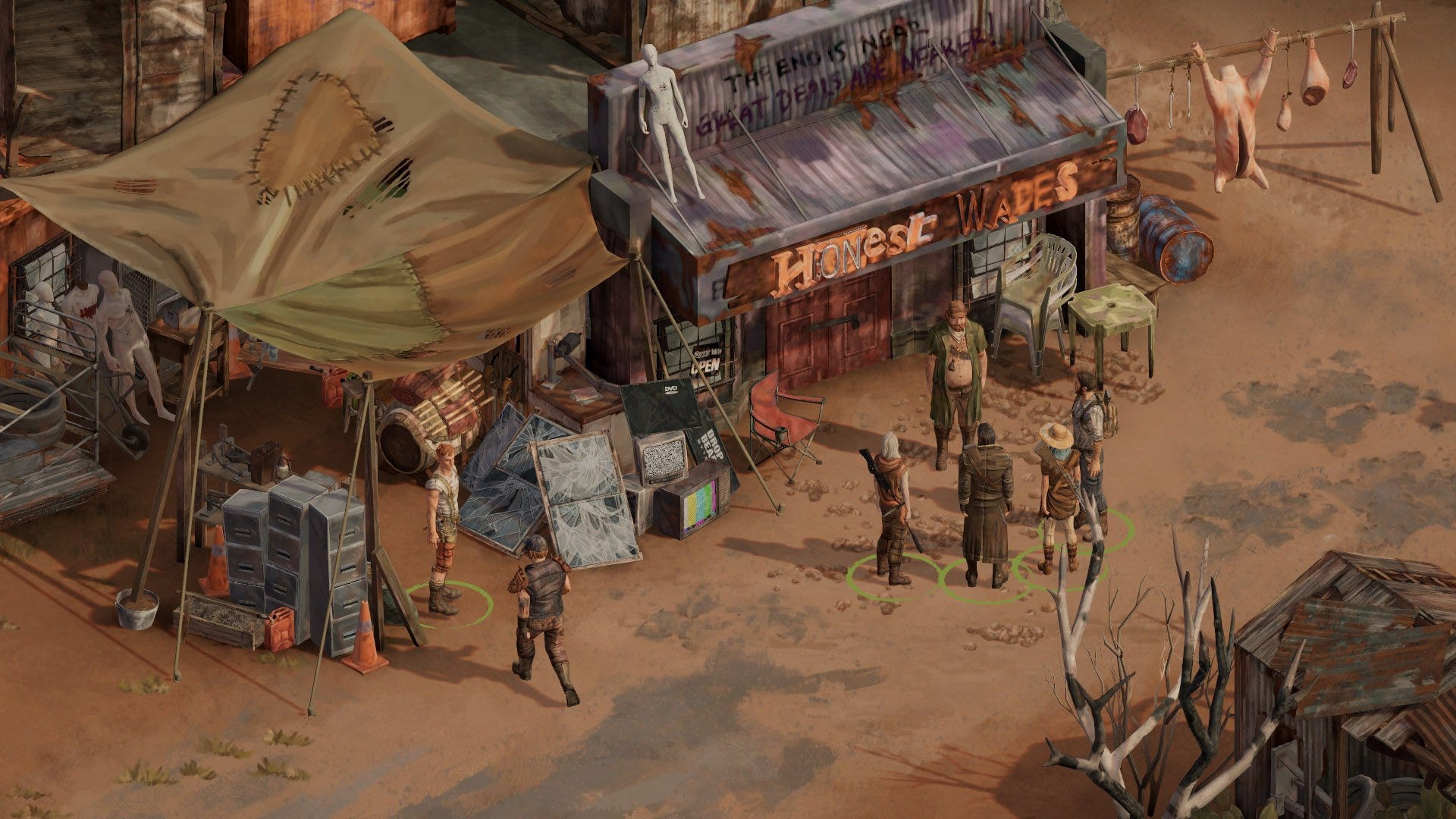
My favourite RPGs are the ones that really consider exactly who the character is - or can be - in their world. From Tyranny's power-grasping fatebinder in an occupied land, and Harry du Bois's desperate reflection of the ideologies around him in Disco Elysium, Broken Roads' promise of philosophically mapped out moral quandaries in a lawless post-apocalypse looked to fit right in.
The idea is that your decisions and dialogue fall across a moral compass, being somewhere between utilitarian, humanist, nihilistic or machiavellian, and that these morals can be uniquely tested in the wilds of the post-apocalyptic outback. If the trolley problem happened at London King's Cross, you'd have to factor in a £1000 railway trespass fine - but if it's raiders in the desert that are responsible, it's just you and your moral impulses.
Broken Roads is a world where the social contract is in flux, where you can see exactly how societies are constructed when they have to be rebuilt from scratch. Concepts like 'justice', 'safety' and 'freedom' mean vastly different things to the travelling scavenger, the isolated homestead, and the walled-in city - and Broken Roads is very happy to gesture towards the conclusion that maybe the societies we live in are equally artificially constructed, even if their histories are a little longer.

Boom time: whether by accident or design, the Fallout TV show - announced in 2020 and arriving in a binge-ready eight-episode payload this week - is launching at an auspicious moment. After the mushrooming success of HBO's The Last of Us, screen adaptations of video games have never been hotter or more respectable. Similarly, the lingering impact of Oppenheimer, now forever glowing with Oscar acclaim, means the world has had atomic bombs on the brain since last summer.
But transferring Fallout's hardscrabble post-nuclear pleasures to the small screen presents a problem similar to Fallout inventory management. With such an abundance of material and only so much capacity, what do you keep and what do you throw away? The good news is that the Prime Video adaptation cannily lifts the franchise's road-tested production design - refined over the course of six core titles spanning two decades - completely wholesale.
Of course they were going to keep the snazzy blue jumpsuits, hulking Brotherhood of Steel power armour and the vast, clanking, cog-shaped Vault doors that resemble a particularly intimidating Early Learning Centre playset teaching toddlers how gears work. Those are all cool as hell. But there are other visual callbacks to the games in practically every frame of this deluxe Prime Video adaptation, from Nuka-Cola bottle caps to the strangely comforting sight of two-headed Brahmin cows.

Much like there are thought to be just seven main story plots, it might be easy to say there are few video game genres left to be discovered. After forty years of gaming, I know my preferred ones, and they're typically shadowy and unsettling worlds that ooze blood and bullets. How strange it is, then, to have gone this long without a game that not only blends several of these together, but does it in such a stylish and provocative way, too.
If the name Children of the Sun summons immediate thoughts of Joseph Seed and dodgy cults… well, congrats. You've guessed correctly, my friend. Whilst little is revealed explicitly - some of what we learn about Children of the Sun's story is via its animated shorts; some comes via subtle in-game clues - here's what I can tell you: you're The Girl, and The Girl is apoplectic. Armed with a sniper rifle, a single bullet and enough pent-up rage to power a small city, she's on a mission to raze the titular cult to the ground, along with every single soul ever connected to it.
While that setup alone was enough to pique my interest, Children of the Sun's magic is that even though it's been tagged as a shooter on Steam… well, it's not. Yes, you wield a weapon, and yes, you decimate body parts in a crimson puff gory enough to make Sniper Elite blush, but Children of the Sun is a puzzle game first. For as well as that single bullet, The Girl - much like Firestarter's Charlie McGee or Carrie's, uh, Carrie - is imbued with a telekinetic power that enables her to control where the bullet goes once it's fired. This means that regardless of how many cultists are milling about, The Girl can take control of the bullet and ensure she can rip through the skulls of every last man standing with a single shot… and therein lies the puzzle.
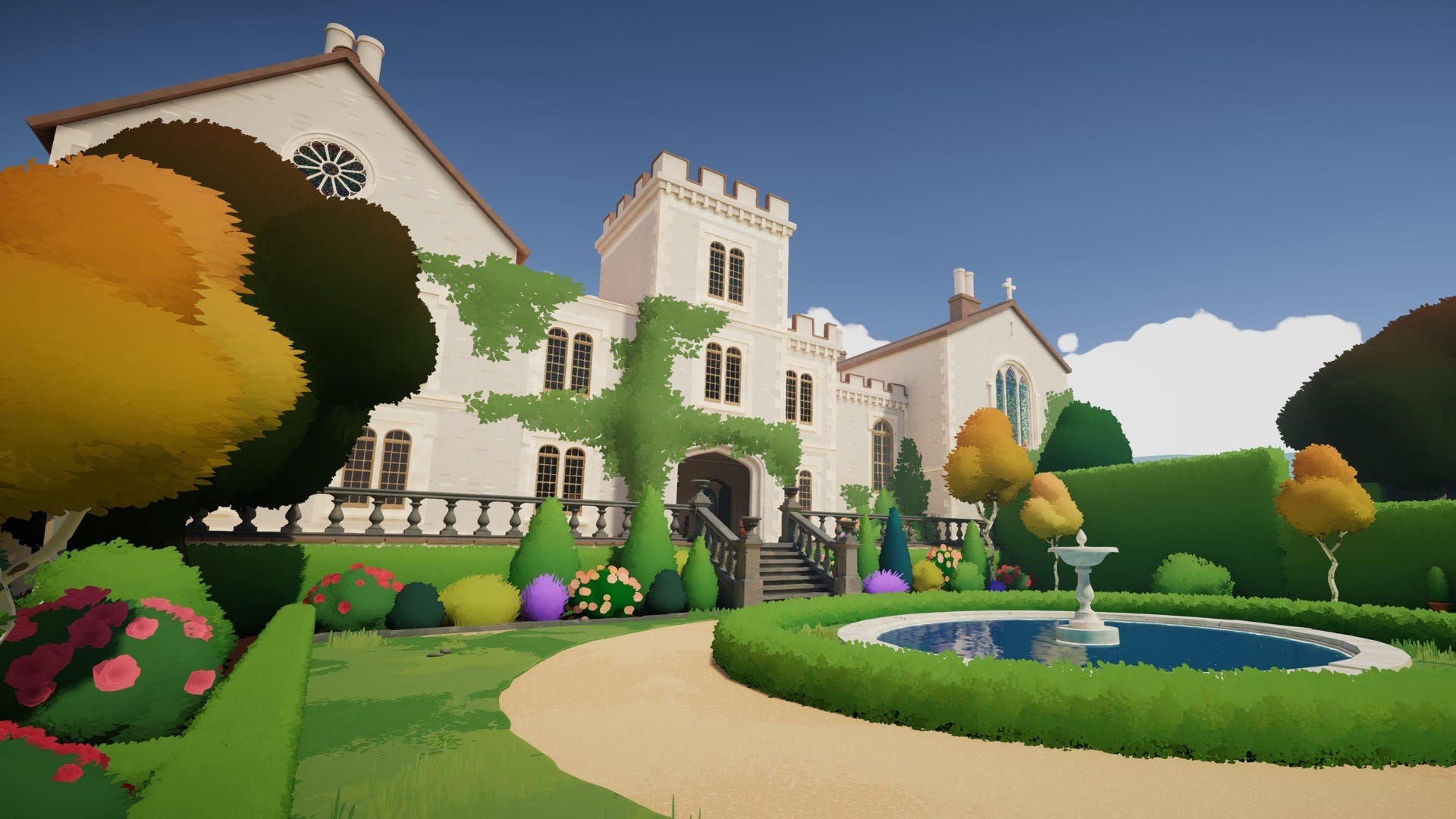
If you’ve ever been into plants, you’ll know, outside their natural habitat, they're inherently a bit of a puzzle. Getting them to flourish is its own kind of game as you attempt to sleuth out and replicate their ideal growing conditions – the correct mix of soil, the perfect amount of light, the proper watering schedule, sufficient humidity, and whatever the bloody hell it is you want from me Calathea zebrina – to keep them happy and healthy and, hopefully, drama-free. Get it wrong and you'll end up with a shrivelled botanic tragedy glaring accusingly at you from the windowsill before it wilts its last wilt out of pure spite; do it right and you'll have a beautiful bit of nature in your home to enjoy and admire for years to come.
Botany Manor taps perfectly into this endlessly rewarding struggle to create a tiny corner of artificial perfection for nature, whisking players back to Somerset, England, and an almost impossibly Mediterranean summer's day in 1890. Here, they'll experience the world and life of retired botanist Arabella Greene in a genteel puzzler structured around completing an Herbarium – that's a book of pressed plants for scientific study, if you're also new to the word. It's a wonderfully peaceful, soothingly unhurried endeavour – a seamless blend of serene first-person exploration and deductive brain teasing - that asks players to poke around the titular house and its vibrant, sprawling gardens in search of clues that, when combined and carefully cross-referenced, reveal how plants in the Herbarium bloom out in the wild. And then it's time to put that newfound knowledge into action, potting up freshly procured seeds and figuring out how to replicate the process using artificial means.
And it's quietly brilliant stuff – a multi-part chain of naturalistic discovery and deduction that flows gracefully, organically, often across multiple areas of the house. A postcard tucked away on a nightstand might, to give an obfuscated example, detail a summer holiday destination where a friend of Arabella recently encountered an unusual flower; a wallchart hung in an adjacent room might conveniently map out the seasonal temperatures in a number of nearby regions. Connect the dots and suddenly the heater on the table in the corner, sporting an adjustable temperature gauge and space enough in front to place a freshly potted seed, reveals itself as a potentially useful tool for your botanical trials.

The survival horror multiplayer has mastered publicity stunts, but it doesn't make a lasting impression.
There are several things that nearly everyone agrees are annoying. Processing fees, for example. Drain flies that flit around your face before dive-bombing your beer can. Likewise, "influencers" - TikTok creators, YouTubers, and other hair-gelled 22-year-olds - tend to inspire bone-deep resentment, which could be why Content Warning doesn't mind tossing them into a horror game.
But, unlike your displeasure with dumb flies, influencer fatigue also tends to ripple with jealousy: "Why don't I have one bajillion followers?" you might find yourself wondering at weak moments, when work feels particularly crushing. "MrBeast doesn't even really cure blindness." So, in being a multiplayer game, Content Warning feels like an effective satire of our widespread obsession with attention. Most of the time, though, it's just as forgettable as the impulse to be seen and loved by everyone forever.
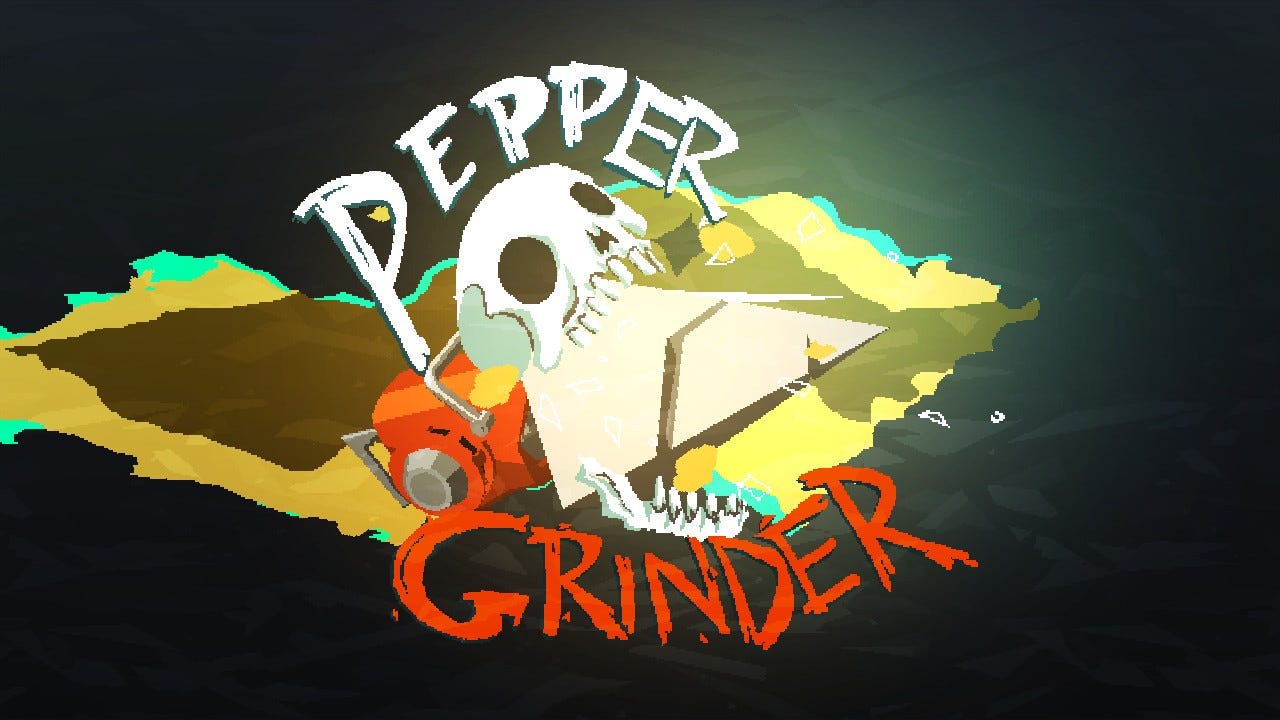
Pepper Grinder is one of those 2D platform games with a big idea. And its big idea is brilliant. You're a tiny character scampering around roomy levels, the camera pulled a good way out, and you have a drill. A drill! You can use it to chug through sand and dirt and emerge with a burst of speed. You can drill enemies until they're just jaw bones and cute gristle. You can use the drill to power a machine that raises the flag that ends each level. You can use the drill to operate guns, sprinklers, skidoos - you name it. More important than all that, though, Pepper Grinder is a game where the little details matter. And I knew this as soon as I saw the vines.
The vines are introduced pretty early on. They're tangles of barbed foliage that do damage if you get too close. Fine. Obvious, even. But what I love is that when you drill through sand or dirt that the vines are attached to, they shudder in a delightful, frenetic manner. They shiver with the energy that comes from your drill. The game has noticed this might happen, and so it has been made to happen. Bodes well, if you ask me.
Both these elements - big idea, attention to the little things - define a breezy, ever-changing game that has been a treat for me these last few days. You may have read that Pepper Grinder's a short game, and it is. But a short game can still outlive your enthusiasm for it, and Pepper Grinder never does.

The Turtle Beach VelocityOne Race is a complete racing wheel and pedals of the sort that you'd expect to find in a mainstream electronics boutique alongside Logitech's ubiquitous G29, yet it offers a powerful 7.2Nm direct drive wheelbase and more realistic load-cell brake pedal, features that often set apart more enthusiast-grade sim racing offerings. Have Turtle Beach played a blinder here to deliver that desirable combo - complete with an external control pod, big integrated display and Xbox/PC compatibility - for £629/$650? Yes, but there are caveats.
Let's start at the beginning. Taking the whole kit and caboodle out of the box, you can see from the off that the design is designed to be a little more approachable than more boxy and industrial efforts from enthusiast firms like Fanatec or Moza, with a more rounded wheelbase that sports not only a large (five-inch) digital dashboard but also a smart fastening system. Two little arms drop out of the bottom of the base with the aid of a provided allen key, and then retract to mount on to a desk with considerable strength.
There's room on either side for the allen key to be stored in the wheelbase too, so you can make further adjustments even if you're sat down at the wheel without having to keep tools nearby. You can use the same tool to attach the included control pod on either side of the wheel, giving you access to a higher button count than I've seen on most wheels of this price range.

Earlier this month I reviewed the Asus ROG Swift PG32UCDM, a 32-inch QD-OLED gaming monitor that combines a 4K resolution with 240Hz refresh rate, impressive HDR and fewer downsides than your typical OLED panel - albeit at an eye-watering £1350 asking price. I noted that while the Asus monitor was a technical tour de force and the best gaming monitor I'd ever tested, it's not necessarily the best value 32-inch QD-OLED. For that, UK buyers ought to be looking at the subject of this review: Dell's £940 Alienware AW3225QF, which uses the exact same QD-OLED panel and therefore ought to offer nigh-identical performance - for £410 less.
Despite that massive price delta, the Alienware is far from a compromised budget alternative - it packs many of the same features as the Asus model and even adds on Dolby Vision support and a curved form factor that suit its expansive proportions.
In this AW3225QF review, I'll cover how the monitor compares to the more expensive Asus model, how meaningful Dolby Vision support is as a value-add and whether the curved screen adds or detracts from the experience - as well as a summary of the 32-inch QD-OLED panel's characteristics for gaming, video and work, given that we've already covered the panel in some detail in the Asus ROG Swift PG32UCDM review two weeks ago.

A gentle adventure into a family's secrets that's nicely crafted but over before it really begins.
I had some concerns about Open Roads when I saw a demo of it earlier this year, mostly because in what I saw, nothing much seemed to happen. A teenage girl walked around a house looking at objects and talked to her mother about them. We were promised a family mystery but there was barely any sight of it, and I wondered when it would all kick in. Now having played it, I realise why that was: there wasn't much there to tease to begin with. Open Roads is a slight game, I now know, both in terms of running length and scope. There aren't grand ambitions or wild adventures. Instead, there's a story about smaller details, about the seemingly mundane but no less important moments when relationships change, and about the imprints we leave behind.
In the game, you are Tess, a teenager who serves as the spark in the story. It's her curiosity, following the death of her grandma, that provokes the discovery you'll make, which leads to the adventure you'll have, and it's her tenacity that sees it through. It all begins in your grandma's house, which you and your mother shared with her up until her death, and which you're now packing to leave. Why you're leaving is something you don't immediately know - like so much else in the game, you'll discover it as you go along.
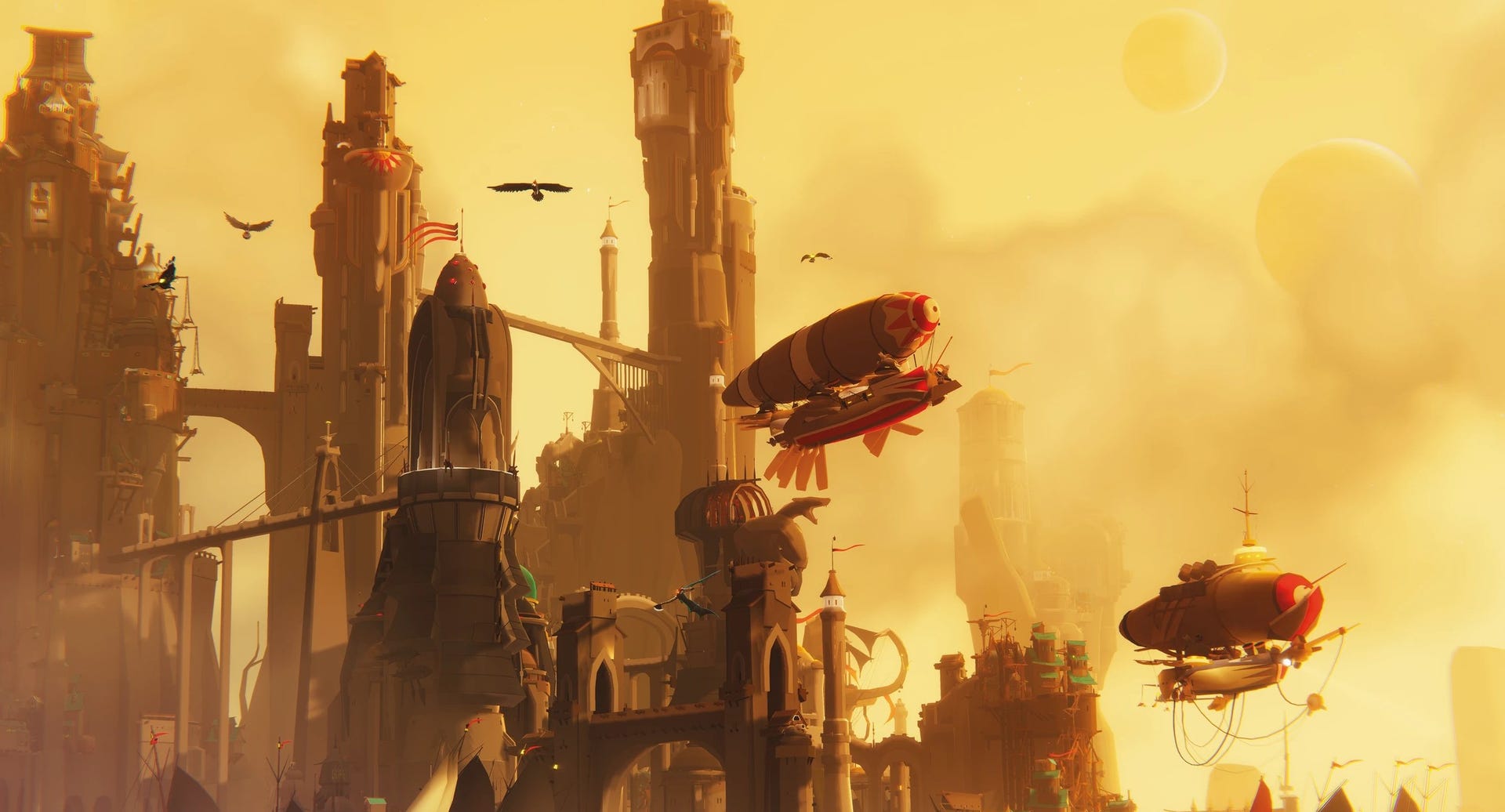
A gentle and unusual building game that's memorable but missing some purpose.
Bulwark is a city-building game that works differently to any city-building game I've ever played. Faced with the barren rocky outcrops of a stormy archipelago, and a handful of buildings to place on them, I thought I knew what to do. In a sense, I did - I knew I needed to build all over it. But how I'd end up doing that would be in a way completely of the game's own. Bulwark is eccentric. Bulwark is its own thing, for better and for worse.
I expected that, to a degree. To fill you in a bit: Bulwark is the second game in what we now know will be a trilogy - the Falconeer Chronicles - made by solo designer Tomas Sala. The first game, The Falconeer, came out a few years ago and had you fly around a stormy archipelago on the back of a giant falcon. It was an aerial combat game. This second game takes you back to the same stormy archipelago but puts a zoomed out, city-building perspective on it. And the third game, known as Project Ancient Waves, will take us there again in a different way. I like this.
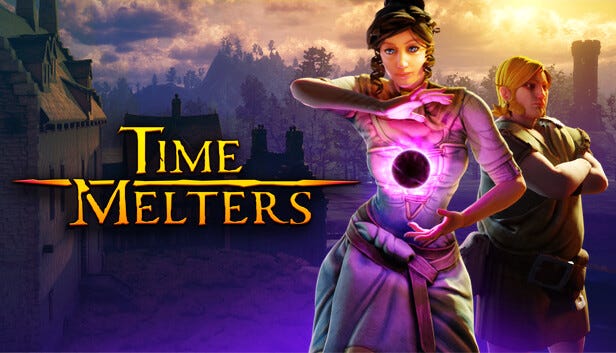
In Timemelters, time is a shoelace. It bends and twists. What you've done with one part of the lace can effect the other parts in unusual ways. You get loops, but also knots and snarls and tangles. Sometimes, you get bows.
Listen. Just yesterday - yesterday in the real world - I was running up a snowy hill - this part was not in the real world - and I saw a bunch of enemies ahead of me, closing in on a friend of mine who had no defences. If my friend died, it would be bad: game over. I was out of range and out of mana, but I was also close enough to attract my enemies' attention, and they started to run at me. Stumped, my hands left the keyboard: I had pretty much given up. And then I watched, stunned, as someone entirely new raced into frame and briskly zapped all the enemies dead. I blinked. My friend who had no defences survived. I, who was out of mana, survived. And the person who had come to our aid was...me? An earlier me. Me from about five minutes ago. Welcome to Timemelters.
Fittingly for such a temporally complex game, let's start by going back a bit. Not back to the 16th century, where Timemelters is set, in a Scotland riddled with witch trials and supernatural paranoia, but back to Sang-Froid: Tales of Werewolves, a gloriously weird strategy-action hybrid from 2013. Sang-Froid is a proper masterpiece if you ask me, and it's a strange masterpiece, which makes it even better. You play as a lumberjack whose sister, I think, is being targeted by the devil. Every night the devil sends wolves to attack your farm and so you place traps, lay defences, and also run around the joint in real-time smacking these beasts about with an axe. During the day, you work chopping lumber to earn money to build up your traps and defences for the night ahead.
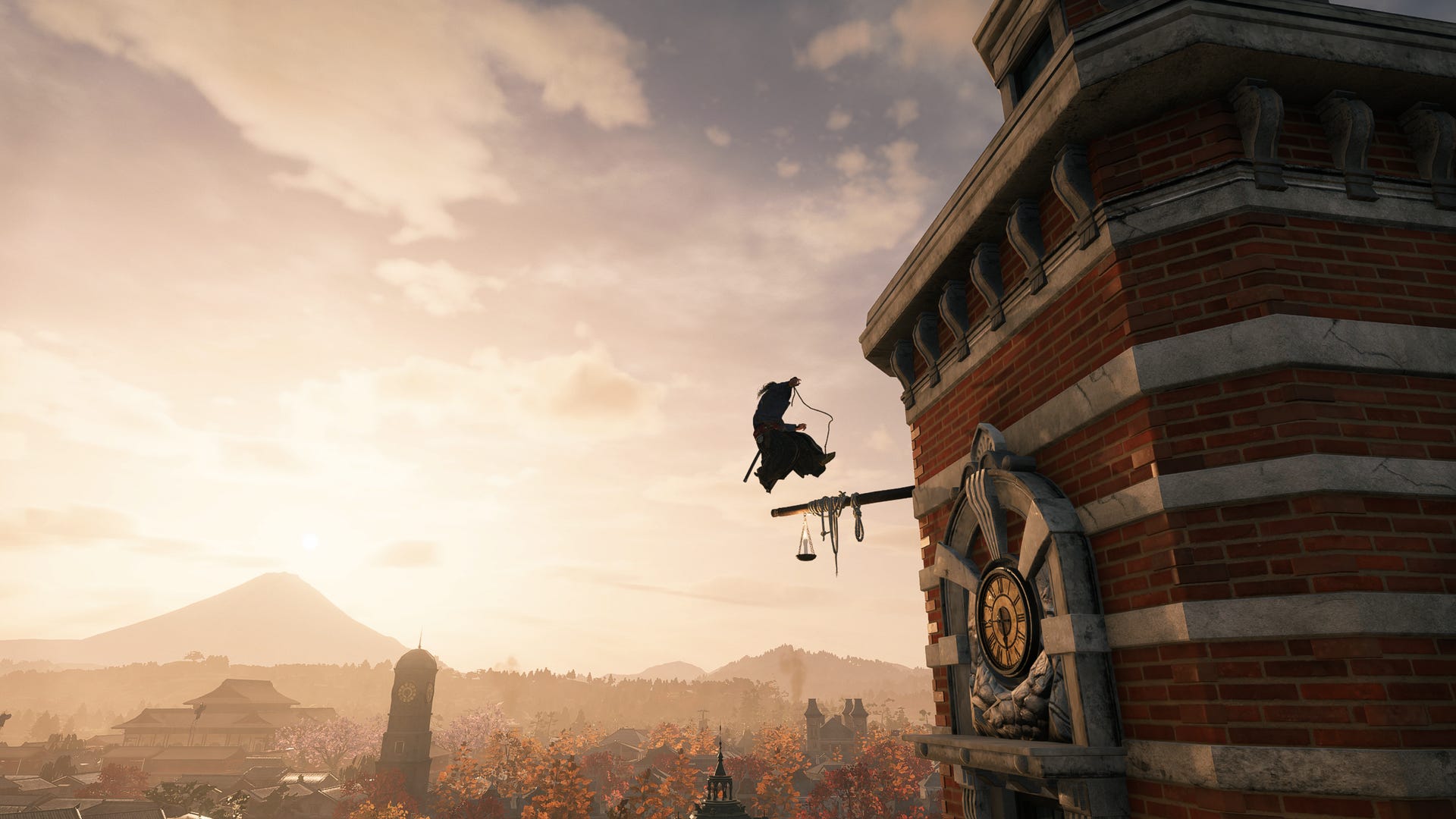
Games set in the Bakumatsu period must feel like buses. You wait almost a decade for one to be made, and then two come along in successive years. After last year’s Like A Dragon: Ishin took us to late 19th century Japan, Rise of the Ronin feels like a trip into familiar territory. It’s perhaps even more familiar, as this is an open-world game that’s quite happy to borrow from the Ubisoft playbook of maps overstuffed with icons, as well as other modern trends. Wing gliding? Sure! Dogs and cats to pet? Why not! And yet it is new territory all the same for Team Ninja. Having spent the past few years as a worthy rival to FromSoftware, with its own take on the Soulslike, this marks a departure: it's more grounded than you might expect, all while evolving the Ki-based mechanics first employed in Nioh for a wider audience.
As another third-party PS5 exclusive to fill out the lack of Sony’s own first-party efforts, it certainly looks the part. That first shot as your nameless protagonist arrives in Yokohama gazing over its rolling fields and the nearby sea looks simply sumptuous. Move in and it’s hard not to notice the light reflecting off long grass or water, or the detailed architecture - a mixture of both Japanese and Western designs. Riding on horseback with Mt. Fuji in the background it's clear: Cor! We’ve come a long way since Nioh’s identikit caverns and ransacked villages.
This beauty is balanced with brutality once you encounter unruly enemies roaming the city’s outskirts or deserted settlements. The fights that ensue usually result in a finishing blow that sees blood gushing with the severing of heads or limbs. Combat has been simplified to the extent that there is just one attack button rather than light and heavy, while another attack is actually a counterspark, the game’s form of parrying, which you’ll need for deflecting combos to wear down your opponent’s Ki (stamina) before following up with a critical attack. What I do appreciate is that even if you opt for the easier difficulty, the game doesn’t just devolve into a hack-and-slasher. You still have to respect this mechanic.